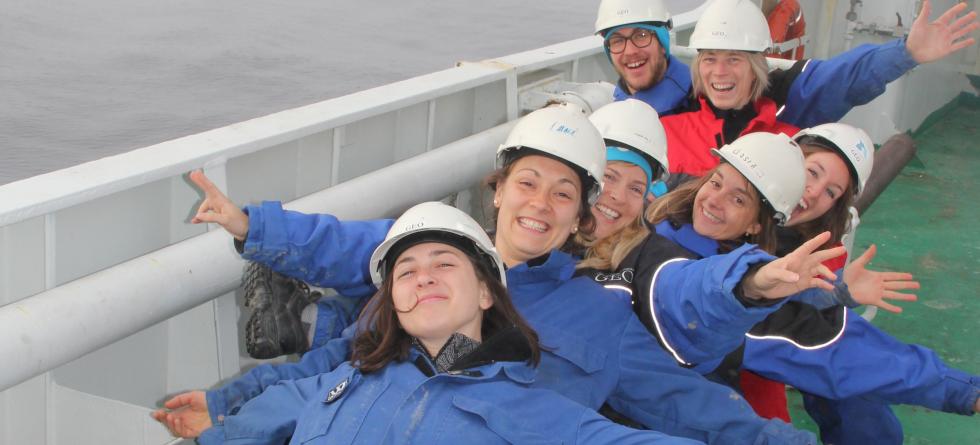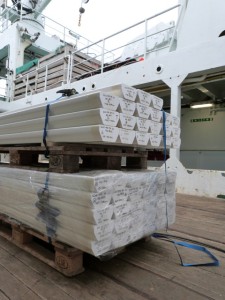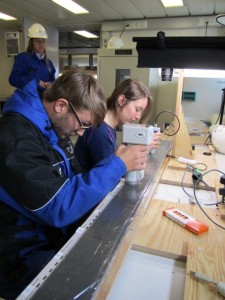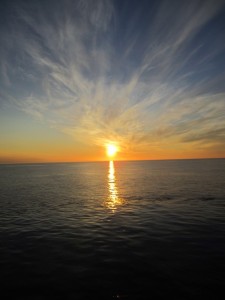
For four weeks, a scientific crew of scientists and students, supported by a ship crew of 15 have been working on 24 hour shifts. The cruise came to an end as the Research Vessel G.O. Sars anchored in Tromsø, Norway on August 14, after spending weeks in icy waters with icebergs and whales nearby on many occations.

“It has been an eventful and successful cruise” reports cruise leader Eystein Jansen from Tromsø. “We bring with us 200m of sediment cores from the western Nordic Seas and the east Greenland Margin”. Shipboard analyses indicate that the material the scientists bring home to their laboratories cover a time span from the present and probably a few hundred thousand years back in time.
New light on rapid changes

“We have a unique material which we hope will cast new light on rapid changes in sea ice cover and ocean circulation during past times. The cores should be ideal for correlation to the ice cores drilled this summer at Renland in Eastern Greenland by our ice core colleagues from Copenhagen”, says an optimistic cruise leader.”The material is also a unique resource for calibration of our methods to study past sea ice and oceanic changes to modern conditions, and should give us opportunities to compare the changes of the recent past with those occuring today at high time resolution”.
Extensive sea ice cover causes problems
The cruise experienced problems with the quite extensive sea ice cover this summer, but during the cruise the sea ice retreated enough for many sites that were inaccessible at the start of the cruise became sea ice free towards the end.

“Nevertheless we were not able to come into the fjord areas, and those objectives will remain to another option. The project also plans a cruise late next summer, where those possibilities may open up. We also had some problems with the winch system for the long piston coring, but despite of these problems we bring back a nice long core material for the post-cruise studies”, says Jansen.